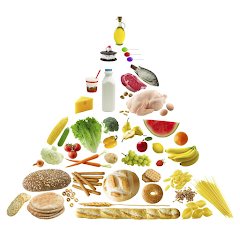All Herbal Treatments
All Herbal treatments have been used for centuries to address various health concerns and promote overall well-being. These natural remedies, derived from plants and botanical sources, offer a holistic approach to healing and can complement conventional medicine. In this article, we will explore the world of herbal treatments, highlighting their benefits, popular remedies, and how they can contribute to optimal health.
Table of Contents
Introduction: Embracing Nature's Healing Power
The Benefits of Herbal Treatments
Understanding Herbal Medicine: A Brief Overview
Key Herbal Remedies for Common Ailments
4.1 Echinacea: Boosting Immunity Naturally
4.2 Lavender: Calming the Mind and Body
4.3 Ginger: Soothing Digestive Discomfort
4.4 Turmeric: Reducing Inflammation and Pain
4.5 Peppermint: Relieving Headaches and Indigestion
4.6 Garlic: Enhancing Heart Health
4.7 Chamomile: Promoting Relaxation and Sleep
4.8 St. John's Wort: Easing Symptoms of Depression
Incorporating Herbal Treatments into Your Daily Routine
Ensuring Safety and Efficacy: Tips for Using Herbal Remedies
6.1 Consultation with a Qualified Practitioner
6.2 Understanding Potential Interactions and Side Effects
6.3 Dosage and Administration Guidelines
The Future of Herbal Medicine: Research and Innovations
Conclusion
Frequently Asked Questions (FAQs)
9.1 Are herbal treatments safe for everyone?
9.2 Can herbal treatments replace conventional medicine?
9.3 How long does it take to see results from herbal treatments?
9.4 Are there any regulations for herbal products?
9.5 Can I grow my own herbs for herbal remedies?
1. Introduction: Embracing Nature's Healing Power
Nature has provided us with a wealth of resources, including plants and herbs that possess remarkable healing properties. Herbal treatments harness the power of these natural ingredients to support the body's innate ability to heal itself. As people seek alternative approaches to healthcare, herbal remedies have gained popularity for their holistic and gentle approach to well-being.
2. The Benefits of Herbal Treatments
Herbal treatments offer a range of benefits for individuals seeking natural solutions to their health concerns. Unlike many synthetic medications, herbal remedies often have fewer side effects and are generally well-tolerated by the body. Additionally, they can provide relief for various conditions, enhance overall wellness, and promote a balanced and harmonious state of being.
3. Understanding Herbal Medicine: A Brief Overview
Herbal medicine, also known as botanical medicine, is a practice that utilizes plants, herbs, and natural substances to promote health and address specific ailments. It draws upon traditional knowledge and the scientific understanding of plant compounds to create effective remedies. The holistic approach of herbal medicine focuses on treating the root cause rather than just alleviating symptoms.
4. Key Herbal Remedies for Common Ailments
4.1 Echinacea: Boosting Immunity Naturally
Echinacea is a well-known herb that supports the immune system and helps prevent and alleviate symptoms of the common cold and respiratory infections. Its immune-boosting properties are attributed to its active compounds, such as polysaccharides and alkamides.
4.2 Lavender: Calming the Mind and Body
Lavender is renowned for its calming and soothing effects on the mind and body. Its aromatic properties make it an excellent choice for reducing anxiety, promoting relaxation, and improving sleep quality.
4.3 Ginger: Soothing Digestive Discomfort
Ginger has long been used as a digestive aid, helping to alleviate nausea, bloating, and indigestion. Its active component, gingerol, possesses anti-inflammatory and antioxidant properties, making it a versatile herb for overall digestive health.
4.4 Turmeric: Reducing Inflammation and Pain
Turmeric, with its active compound curcumin, has potent anti-inflammatory properties. It has been used for centuries to alleviate joint pain, reduce inflammation, and support overall joint health.
4.5 Peppermint: Relieving Headaches and Indigestion
Peppermint is known for its cooling and soothing effects on the body. It can help relieve headaches, ease muscle tension, and support healthy digestion by alleviating symptoms like bloating and gas.
4.6 Garlic: Enhancing Heart Health
Garlic has been widely recognized for its cardiovascular benefits. It helps lower blood pressure, reduce cholesterol levels, and improve overall heart health due to its sulfur-containing compounds, including allicin.
4.7 Chamomile: Promoting Relaxation and Sleep
Chamomile is a gentle herb that has been used for centuries to promote relaxation and support healthy sleep patterns. It is known for its calming properties and can help reduce anxiety and promote a sense of well-being.
4.8 St. John's Wort: Easing Symptoms of Depression
St. John's Wort is commonly used as a natural remedy for mild to moderate depression. It contains hypericin and hyperforin, compounds believed to increase levels of neurotransmitters associated with mood regulation. For More Details Click Here












